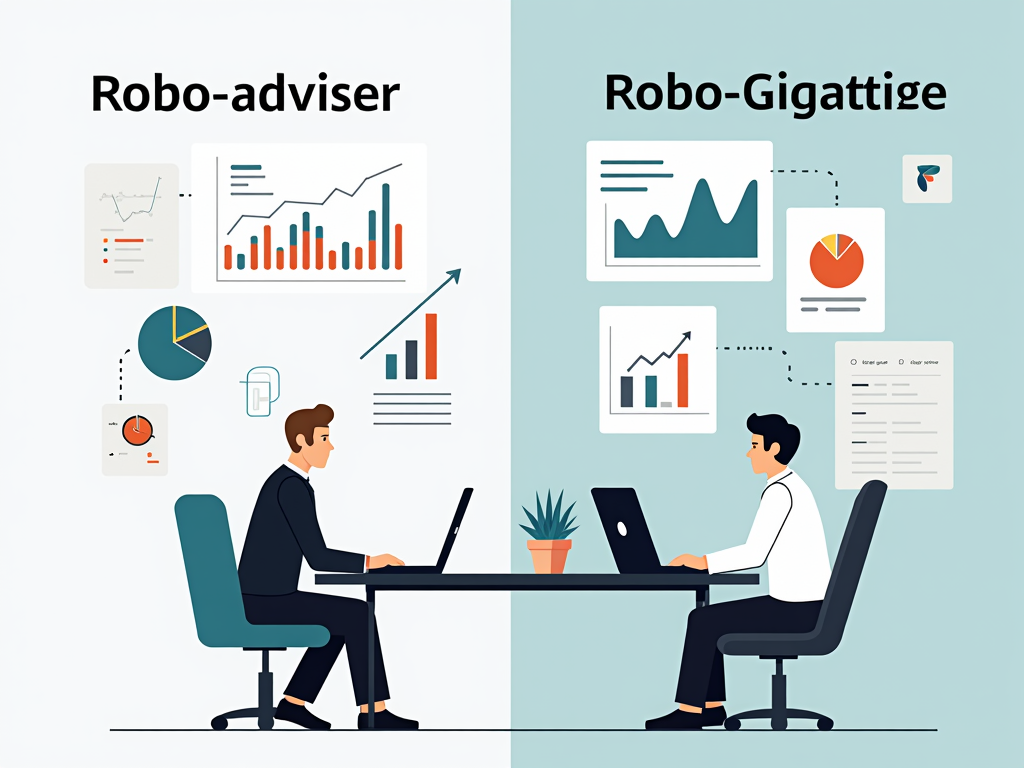In the world of financial consulting, investors face a crucial choice: Robo-Advisors or personal financial advisors? While the technological wonders of Robo-Advisors attract with lower costs and automation, personal financial advisors offer personalized advice and human insight. This choice not only affects returns but also how your financial goals are achieved. The following chapters highlight the cost structures and customization possibilities of both options, providing investors with a solid foundation for informed decisions.
The Price of Consulting: A Cost Analysis between Algorithms and Human Touch

The cost model of financial consulting, whether digital or personal, plays a decisive role in investors’ choice of which path to pursue. The choice between a Robo-Advisor and a personal financial advisor involves various financial considerations, justified on one hand by transparency and on the other hand by individual consulting.
A central aspect of the Robo-Advisor is its transparent and often lower cost model. These providers typically operate with fixed management fees, which usually range from 0.2% to 0.8% of the managed assets per year. These low fees burden less on returns and are particularly attractive to cost-conscious investors. For example, Solidvest sets its fee between 1.05% and 1.40%, with a performance-related component of 10%. Ginmon and Scalable Capital, on the other hand, operate in lower ranges of about 0.92% to 0.98% and around 0.94%, the latter thanks to a fixed management fee plus ETF costs.
In contrast, personal financial advisors are known for their wider price range, which is also explained by more personalized services. Their models are often more complex and include various fee structures, ranging from hourly or project-based fees to commission-based models. Management fees here can incur annual costs from 1% to 2%, justified by intensive personal consulting, the creation of individual portfolios, and responsive assistance.
In comparison, it can be observed that Robo-Advisors offer guaranteed, lower costs structured more transparently. This more flexible pricing policy is often a decisive factor for newcomers to the market or for technology-oriented investors who wish to manage their portfolios primarily based on algorithms. On the other side is the personalized consulting of personal financial advisors, which can be valued higher due to personal interaction, experience, and flexibility, and can be tailored to the specific needs of the investors. These decisions are based less on the aspect of price and more on the quality of individual advice, which for many can justify the cost surplus.
Ultimately, the choice between these two options is strongly influenced by the personal priorities of the investor. While the cost structure is a decisive aspect, it should be considered in the context of thoughtful personalization and the type of consulting desired.
Personalization and Tailored Financial Management: Which Approach Suits You?

The choice between a Robo-Advisor and a personal financial advisor puts investors in front of the choice between saving on costs and receiving individual assistance. This choice is closely related to the priorities and preferences of the investor. While Robo-Advisors offer low fees and automated management, personal financial advisors stand out for their extensive personalization and personal consulting.
Robo-Advisors are distinguished by their efficiency and cost-effectiveness. With lower management fees ranging between 0.2% and 0.8% of the invested capital per year, they are attractive to investors who wish to maximize their returns without overly burdening expenses. These digital platforms use algorithms that make decisions devoid of emotions, minimizing psychological errors in investments. Additionally, automated rebalancing provides the advantage of adjusting portfolios without the investor having to intervene, which is particularly important for beginners.
However, Robo-Advisors reach their limits in terms of personalization. Since they rely on standard strategies, they leave little room for customized adjustments to financial goals or specific circumstances. Furthermore, the automated platform often replaces the human connection, meaning that investors must settle for FAQs and chatbots instead of personal advice.
On the other hand, personal financial advisors specialize in developing tailored strategies that meet the unique needs of their clients. These advisors can not only consider an investor’s financial goals but also provide emotional support during turbulent market phases. This personal relationship allows for developing complex investment strategies that go beyond the capabilities of algorithm-based consulting. This is especially important when the investor’s life and financial situation is complex and changing.
However, this tailored approach comes at a cost. With average fees of 1-2% of the invested capital per year, personal financial advisors represent a more expensive solution, which can especially burden long-term returns. Additionally, there is a risk that even advisors may be emotionally influenced and might make mistakes in turbulent situations.
Ultimately, the decision between a Robo-Advisor and a personal advisor depends on personal preferences, the intensity of advice needed, and the willingness to pay more for a more individualized service. Readers are encouraged to evaluate which priorities best support their financial decisions.